Solutions
Teams
Built for your whole team.
Industries
Trusted by all verticals.
Mediums
Measure any type of ad spend
Platform
Use Cases
Many Possibilities. One Platform.
AI and Automation
The Always-on Incrementality Platform
Teams
Built for your whole team.
Industries
Trusted by all verticals.
Mediums
Measure any type of ad spend
Use Cases
Many Possibilities. One Platform.
AI and Automation
The Always-on Incrementality Platform

All of your users are using Google. In theory, most Advertisers could just spend 100% of their ad spend with one channel, theoretically reaching all customers and all prospects. But most marketers go beyond a single channel strategy for various reasons:
Now when it comes to advertising and getting as many “eyeballs” as you possibly can some brands think it’s best to advertise across plenty of platforms. Yet to their surprise, we have discovered that this is not the case.
During a recent analysis, looking at the marketing activities of all of our customers across 14 different verticals, spanning from those with ad spends of <$100K per month, to those spending over $10M / month, we found some interesting insights that we wanted to share.
The analysis was looking at one year of data, spanning from Q4 2021 to Q4 2022, excluded.
Surprisingly, this year we have seen that many brands are only using four channels when it comes to their marketing mix.
Read more to find out which channel takes the biggest cut of the pie.
Now as you might have predicted, the larger the budget, the larger the “net” would be. Looking at our data, we have seen that there is a clear correlation between the number of channels advertisers are active with against their total ad spend.
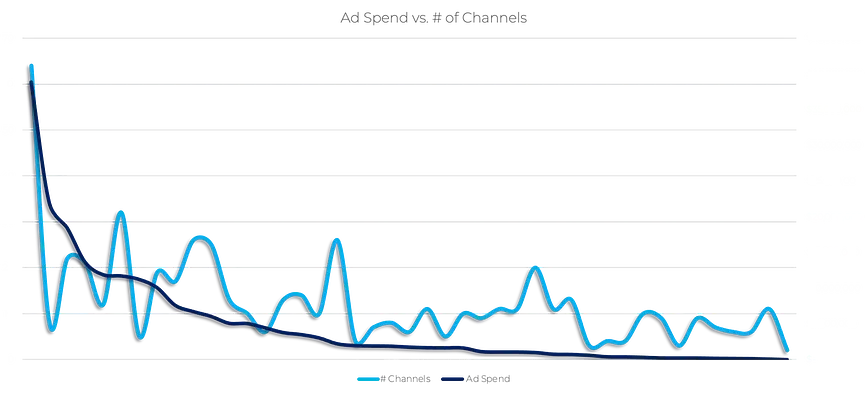
The primary reason to diversify their channel mix is to increase engagement and tap into niche audiences that might be exclusively found one channel vs. another. For example, for brands that want to reach Gen Z and Millennials they will choose to advertise on channels like TikTok or Influencer Marketing where this demographic is more likely to engage in ads.
Alternatively, marketers choose to diversify their marketing mix to not have all their “eggs in one basket”. As the marketing landscape is quite volatile with CPMs fluctuating and all channels being affected by external factors such as seasonality or market trends. It is wise for marketers to ensure that they split their budgets across several channels to see how the performance is.
Below you can see that as a brand has larger advertising, they are often expanding their reach with more channels and steering further away from the average number of channels. Which we have previously mentioned is four. The correlation between the maximum and median number of channels and ad spend did not surprise us so much. On the other hand, the minimum, did.
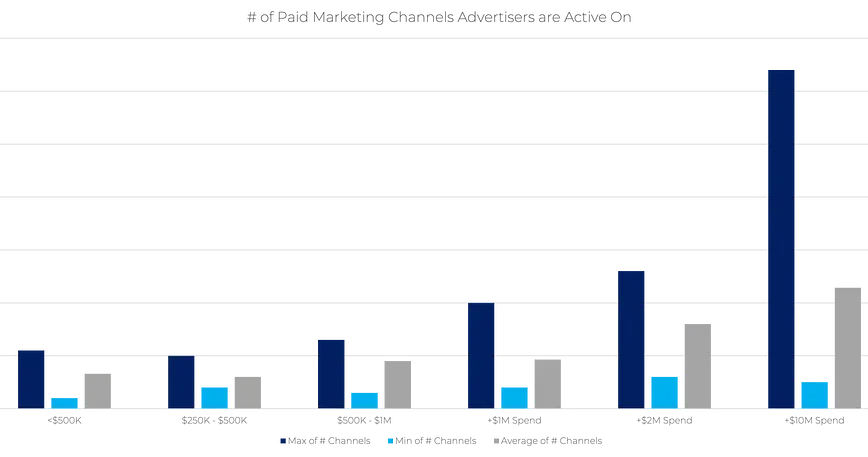
When we’re taking a closer look, we can see the clear correlation between ad spend and number of channels (excluding one outlier with literally hundreds of channels), but for the min, we had to truncate the table differently to make the graph bars visible!
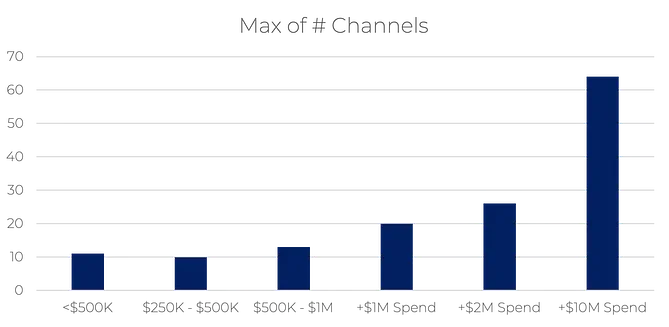
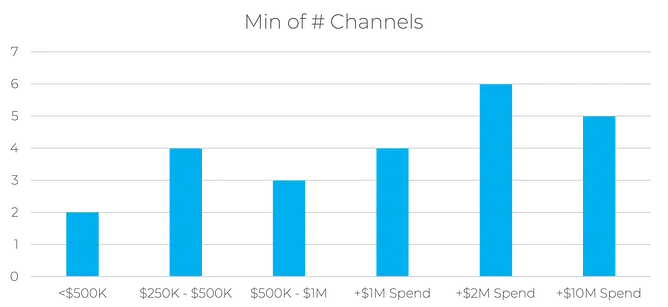
The 4-6 most common channels were not a big surprise factor.
before we break down the specific channels. Let’s give you a bit of background as to the “advertiser behavior” we discovered. While our client data showed that there were several “popular” channels used in their mix the ad spend did not correlate. For example, we saw several of our clients active on Apple Search Ads (ASA) and TikTok, yet the percentage of ad spend across those channels is not represented equally in comparison with Meta, where brands spend much more in terms of share of their overall budget. As you can see from the breakdown below, the current channels that take the biggest percentage of the advertising spend are the classic four: Google, Meta, Facebook and TV.
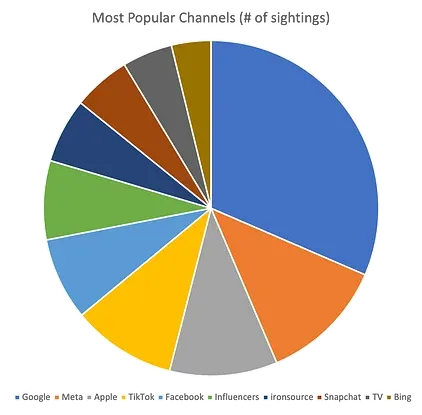
Is that what you expected to be the biggest four channels? Do these results align with your marketing mix? We would love to know if this corresponds to your marketing strategy.
How many channels are you active across ? Are you leveraging enough channels to reach your audiences ?
INCRMNTAL allows brands to measure all their marketing activities in one place whether they are on iOS, Android, web, TV, influencers, podcasts and so on.
Your users are everywhere, and your measurement solution should too consider “everywhere”